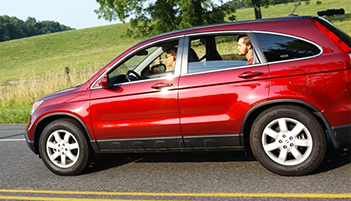HOW CAN WE HELP YOU? Call 1-800-TRY-CHOP
In This Section
Do Teens With Autism Get Their Driver's License?

The Findings:
One in three adolescents with autism spectrum disorder (ASD) acquires an intermediate driver’s license, and the majority does so in their 17th year. An intermediate license permits drivers to travel with restrictions, such as driving curfews and limits on the number of passengers. Teens with ASD who receive their permit are obtaining licenses at nearly the same rate as other adolescents.
Why it matters:
Driving can increase mobility and independence for teens with ASD, but researchers knew little about the proportion of adolescents with ASD who get licensed and the rate at which they progress through Graduated Driving Licensing (GDL). The findings have implications for parents, clinicians, and driving educators who can help guide teens with ASD and their families as they make the decision to pursue a driver’s license. The findings also will help researchers develop resources and support for families and adolescents with ASD as they navigate the process toward independent driving.
Who’s involved:
Children’s Hospital of Philadelphia researchers, clinical psychologists, and behavioral pediatricians from the Center for Injury Research and Prevention and the Center for Autism Research: Allison E. Curry, PhD, MPH; Benjamin Yerys, PhD; Patty Huang, MD, Kristi Busico Metzger, PhD, MPH.
How they did it:
Researchers conducted a unique linkage of more than 52,000 CHOP electronic health records of children born from 1987 to 1995 and New Jersey driver licensing data to determine current rates and patterns of licensure among adolescents and young adults with ASD (without intellectual disability) and those without ASD.
Quick thoughts:
“ASD can affect decision-making, information processing, and attention to varying degrees, and we need to understand what resources, specialized instruction, and other supports might be helpful for teens and adults with ASD who are considering or preparing to drive,” Dr. Yerys said.
What’s next:
Since car crashes are the number one cause of death for adolescents, the study authors suggest that further research is needed to understand how families make the decision to have their children pursue a driver’s license. They also want to understand more about how adolescents with ASD drive and how clinicians and driver educators currently support these families.
Where it’s published:
Who helped fund the study:
The Foederer Award and the Eunice Kennedy Shriver National Institute of Child Health and Human Development at the National Institutes of Health provided funding for this research.
Where to learn more:
Visit teendriversource.research.chop.edu to read a press release and get other information about teen driver safety. Also visit CAR Autism Roadmap for an article on Driving and ASD: Determining Readiness.


